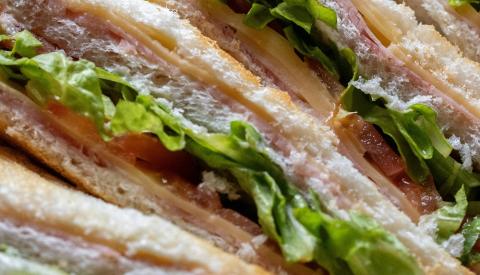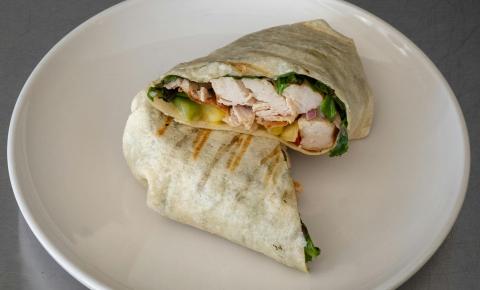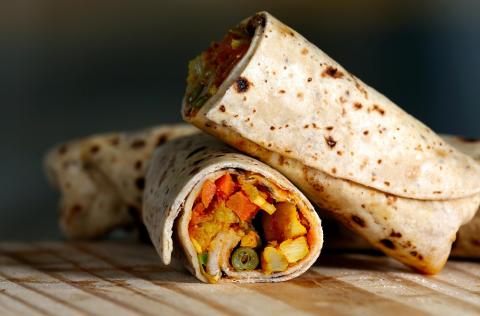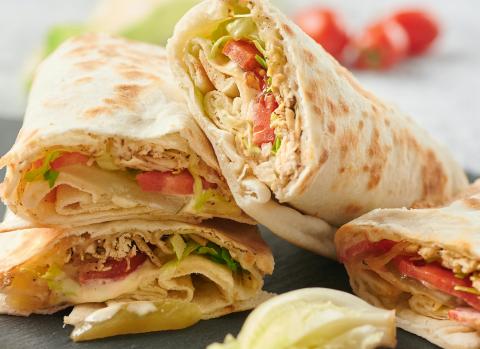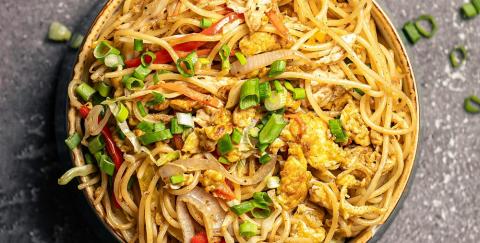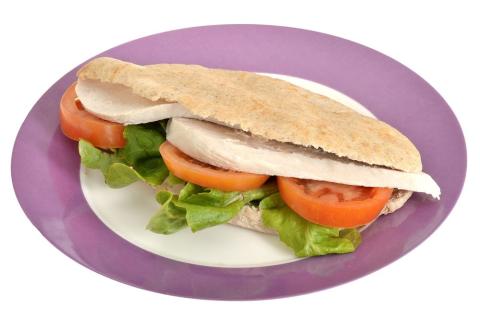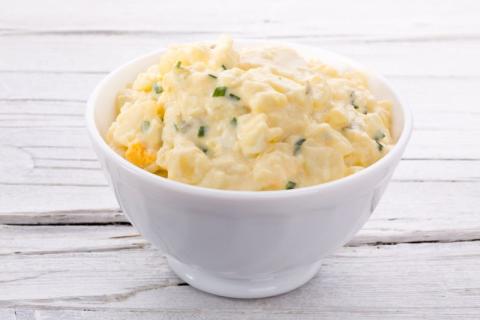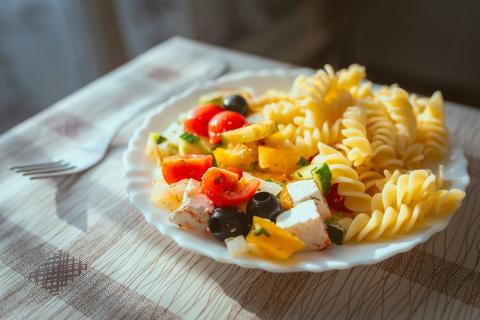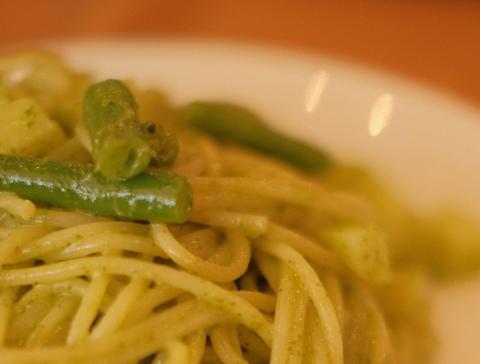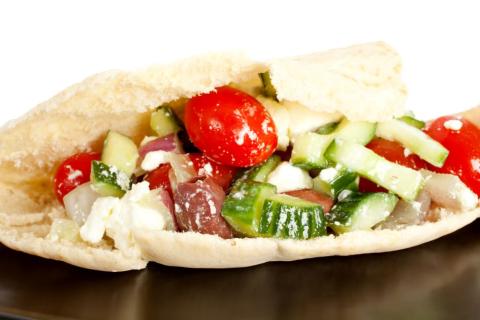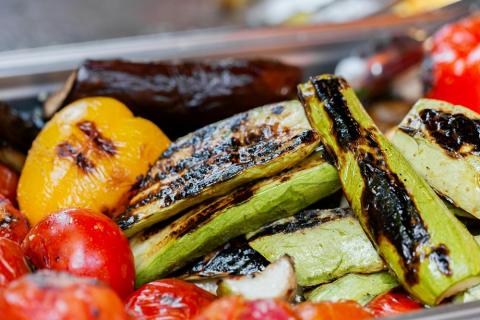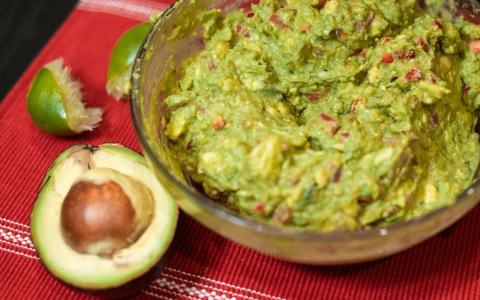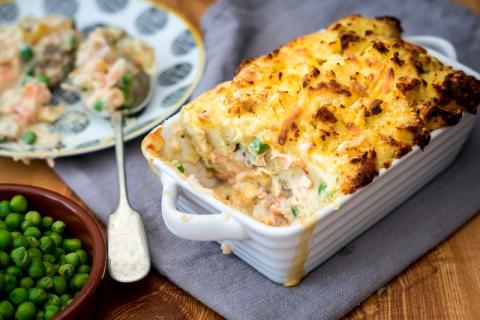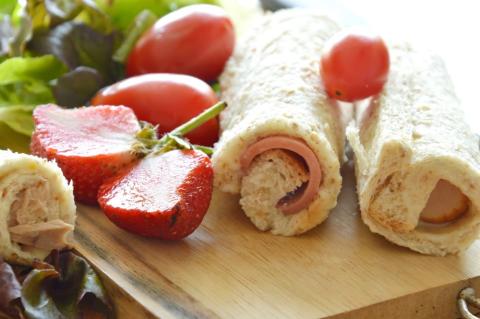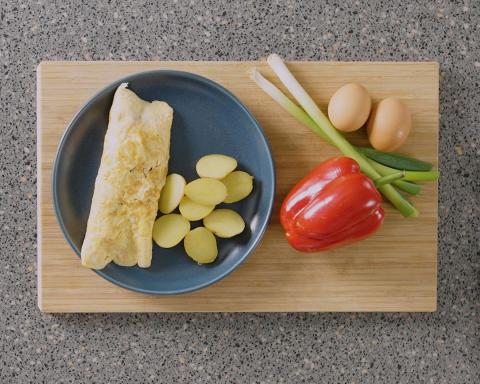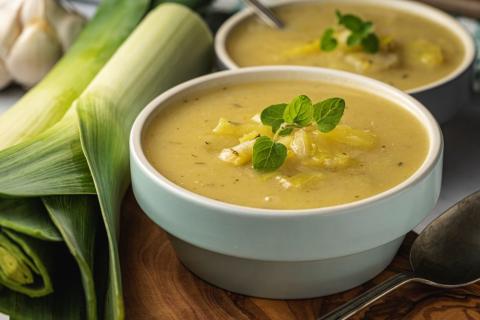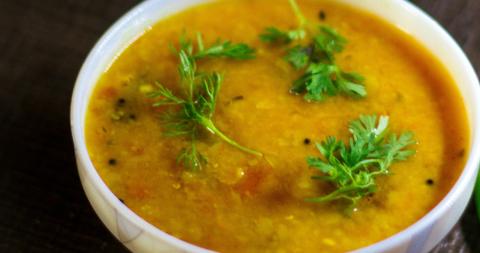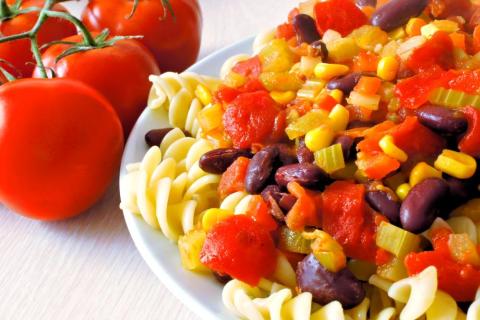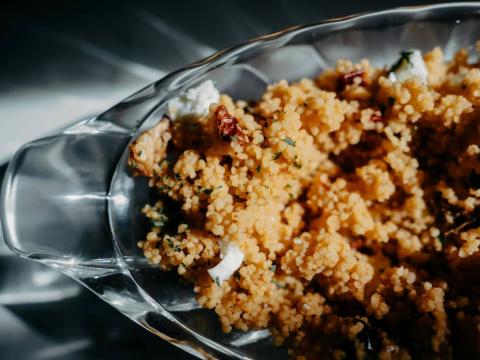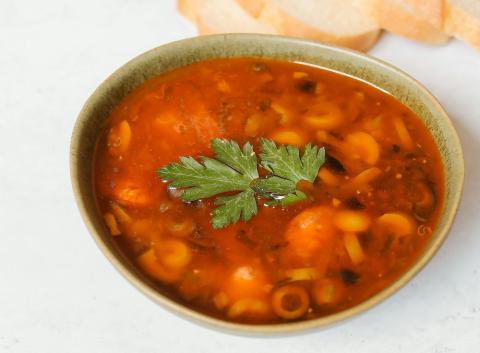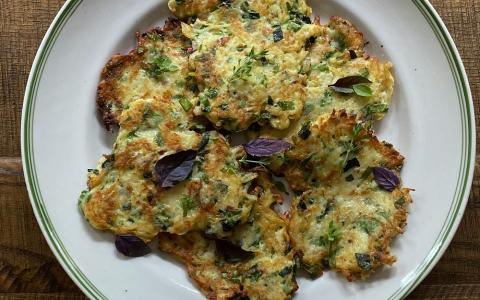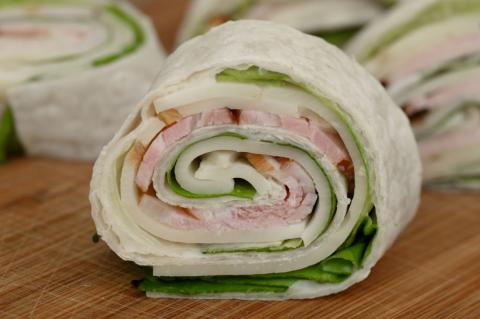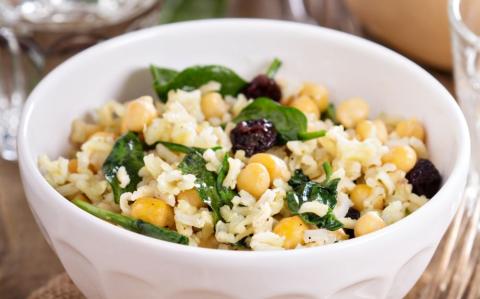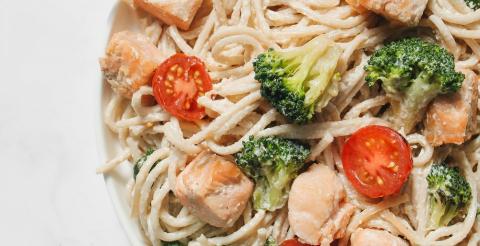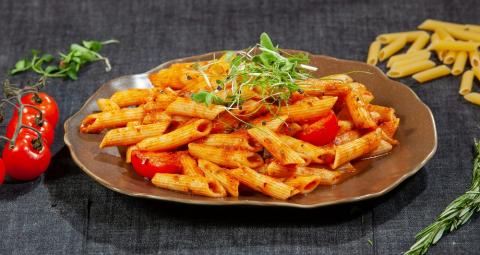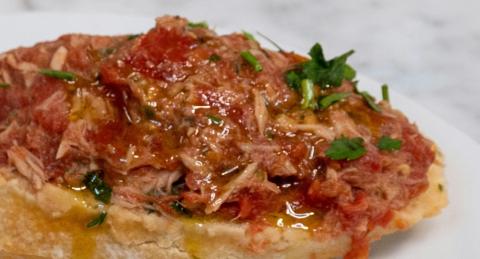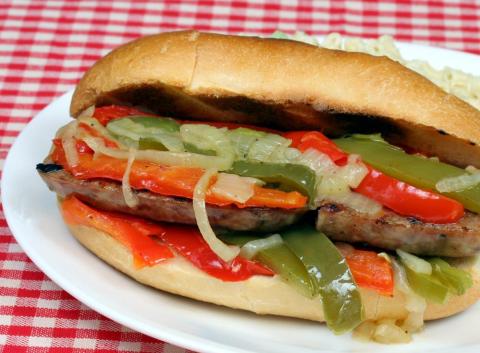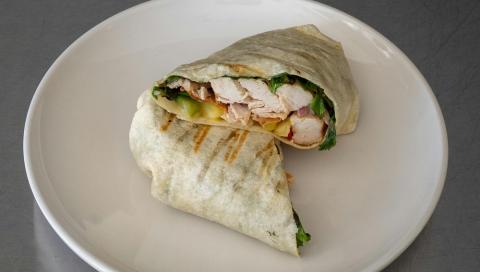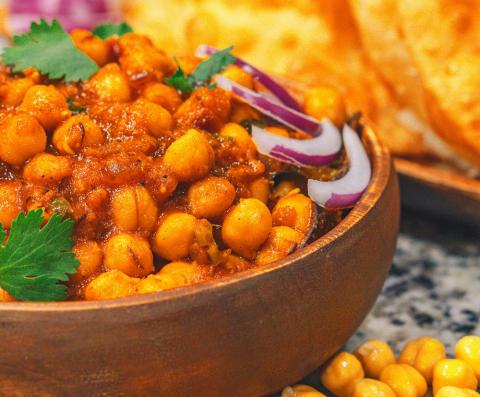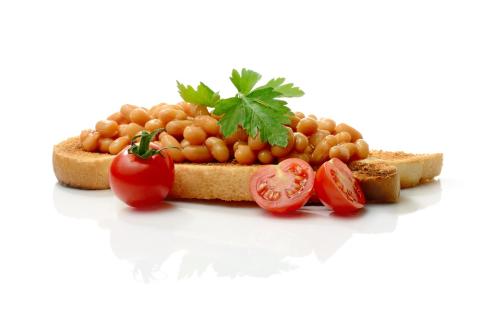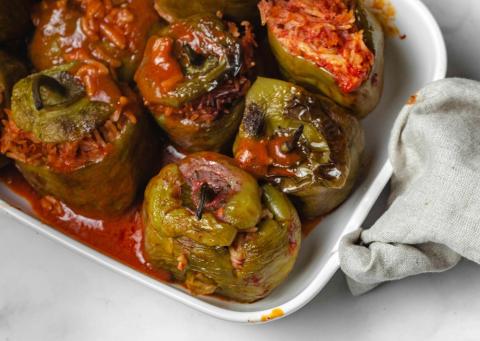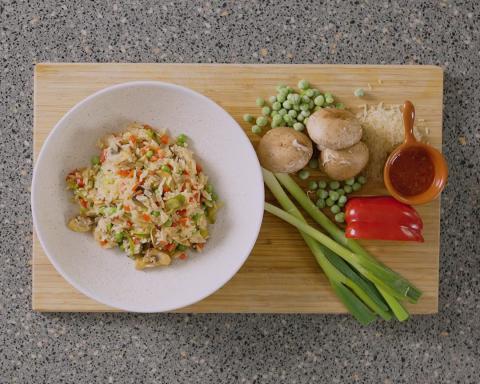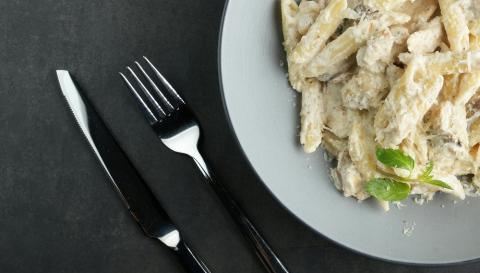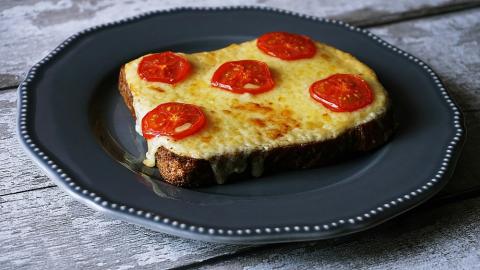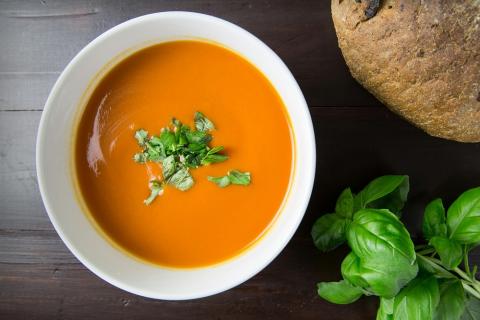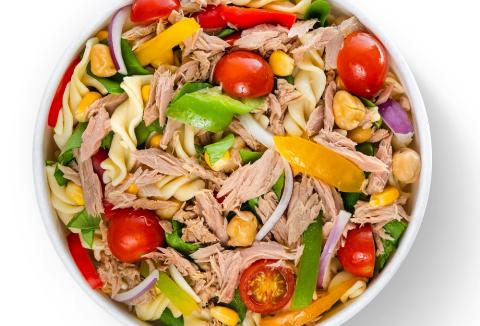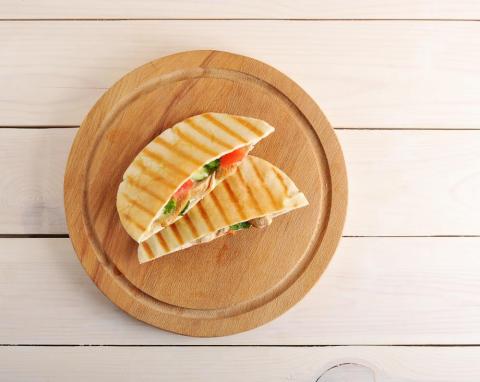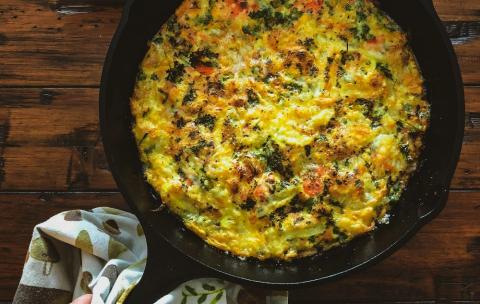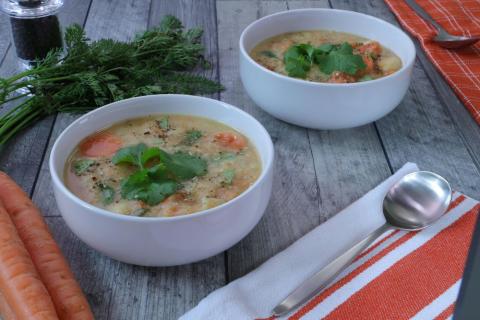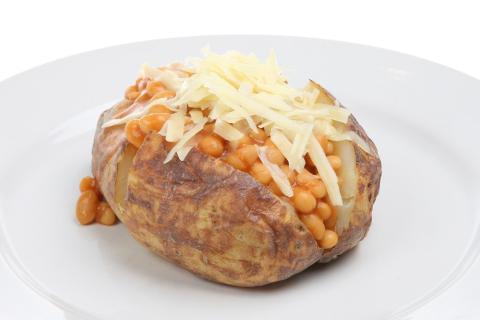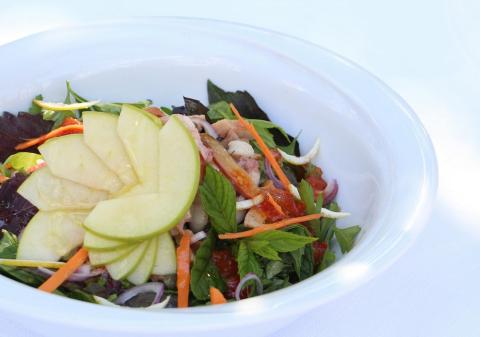- 2 (skinless and boneless) (240g) Smoked Haddock Fillets
- ½ Cups (135ml) Water
- 1 (150g) Onion
- 1 Pint (600ml) Semi-Skimmed Milk
- 4 (500g) Potatoes
- (25g) Low Fat Spread
- to taste Ground Black Pepper
Ingredients
Allergy Disclaimer
Always check the label of each ingredient for allergy warnings.
Method
- Wash, peel and dice potatoes. Place in a large pan with boiling water and cook until soft, approximately 20 minutes.
- Peel onion and chop finely.
- Place the haddock in a medium sized frying pan with enough water to cover it, no more. Bring to the boil and add the chopped onion, then turn down the heat and simmer gently.
- When the haddock is cooked, separate the flakes using a fork. If they don't separate easily a little more cooking is needed.
- In a small pan, bring milk to the boil and then add this to the fish.
- Drain potatoes, return to the pan then add low fat spread and mash using a masher or fork until smooth.
- Stir potato into the fish, to thicken the soup and add black pepper to taste.
Time Saver Tips
Buy skinless & boneless haddock
Cost Saver Tips
Frozen fish is cheaper. Allow fish to defrost before cooking. Make in bulk and keep for another day.
Tips for Kids
Take a trip to your local fishmongers.
Nutritional Information
Based on a single serving of 397g (% of an adult's reference intake)
Energy
246 kcals ( 12 %)
1,032 kJ ( 12 %)
Fat
2.4 g ( 12 %)
Saturates
28.6 g ( %)
Sugar
9.9 g ( 11 %)
Salt
1.6 g ( 27 %)
Detailed nutritional information
| Per 100g | Per 397g serving | |
|---|---|---|
| Energy Kcals | 62 | 246 |
| Energy Kj | 260 | 1,032 |
| Protein | 5.6 g | 22.2 g |
| Total Fat | g | g |
| Saturated Fat | 0.6 g | 2.4 g |
| Carbohydrates | 7.2 g | 28.6 g |
| Total Sugars | 2.5 g | 9.9 g |
| NSP Fibre | 0.5 g | 2 g |
| Sodium | 180 mg | 715 mg |
| Salt | 0.4 g | 1.6 g |
Find out about nutritional labelling
Nutrition labels on the front of packaging
- Most of the big supermarkets and many food manufacturers display nutritional information on the front of pre-packed food.
- Front of pack nutrition labels provide information on the number of grams of fat, saturated fat, sugars and salt and the amount of energy (in kJ and kcal) in a serving or portion of a recipe.
- The labels also include information about reference intakes (expressed as a percentage) which are guidelines about the approximate amount of particular nutrients and energy required for a healthy diet.
- The colour coding tells you at a glance if the food has high (red), medium (amber) or low (green) amounts of fat, saturated fat, sugars and salt.
- The more greens on the label, the healthier the choice
- Amber means neither high nor low, so you can eat foods with all or mostly ambers on the label most of the time.
- Reds on the label means the food is high in that nutrient and these are the foods we should cut down on. Try to eat these foods less often and in small amounts.
Food shopping tips
If you’re trying to decide which product to choose, check to see if there's a nutrition label on the front of the pack. This will help you to quickly assess how your choices stack up. You will often find a mixture of red, amber and green colour coding for the nutrients. So when you're choosing between similar products, try to go for more greens and ambers and fewer reds if you want to make a healthier choice.
 Activities & Play
Activities & Play Behaviour
Behaviour Childcare
Childcare Development & Growing Up
Development & Growing Up Family, Friends & Relationships
Family, Friends & Relationships Feeding Your Baby
Feeding Your Baby Food & Eating
Food & Eating Health & Safety
Health & Safety Mental Health & Wellbeing
Mental Health & Wellbeing Money & Work
Money & Work Online Behaviour & Safety
Online Behaviour & Safety Pregnancy & First Days
Pregnancy & First Days School & Education
School & Education Sleep
Sleep


